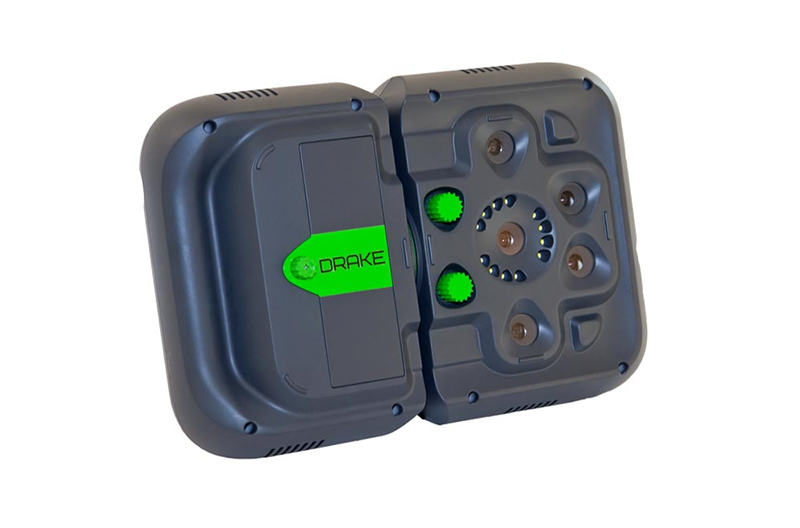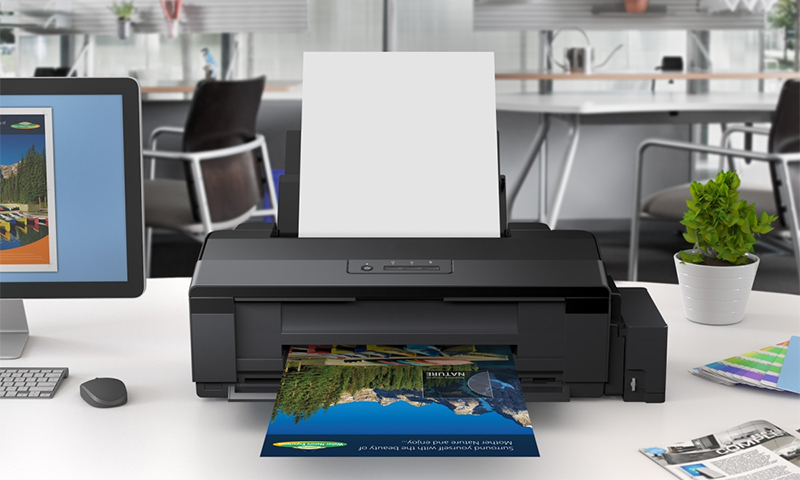3D technologies are increasingly entering our lives. Now they serve not only for entertainment, but also bring real benefits. Using 3D scanning, you can quickly create a full-fledged digitized copy of any object - from a miniature toy to a high-rise building. So if you decide to start your own 3D production, but do not want to waste time creating models for printing, you will need one of the scanners reviewed in our review.

Content:
Desktop 3D scanners
Shining 3D EinScan-SE - a handy scanner for beginners

One of the best desktop scanners creates excellent detailed copies of objects of different sizes in white light and can work in a fixed or automatic mode.
The latter involves the shooting of small objects located on the turntable, and in time it takes no more than 2 minutes.
Pros:
- Structured white light "catches" the smallest details on the surface of objects of complex shape.
- The scanner does not need calibration - debugging occurs automatically.
- Captured volume from 3 cm3 to 0.7 m3.
- Able to scan in color.
- Good speed - one cycle of shooting takes about 8 seconds.
- Universal connection to the main device via USB 3.0.
- The ability to upload print-ready models to the cloud storage.
- "Friend" with most 3D-printers.
Minuses:
- It works only with Windows based systems of at least eight and requires a minimum of 8 GB of memory.
- Price within 70-90 thousand rubles.
RangeVision Spectrum - Professional Scanner

This scanner can work with objects ranging in size from 1 cm to 3 m and independently form an STL model from the obtained points, which is already ready for printing.
The device comes with two 3.1-megapixel cameras on an aluminum slide, where their position can be adjusted manually in two planes. When scanning, RangeVision uses eye-safe structured projector light.
Pros:
- Digitization of objects from a distance of 30 cm to a meter.
- High accuracy of shooting 0.04-0.12 mm due to improved resolution of 0.072 mm.
- Acceptable scan speed of 12 seconds / frame.
- Low system requirements - for the work of proprietary software will need 4 GB of memory and the axis is not lower than Windows 7.
- There are automatic and manual gluing of finished scans.
- Low weight - only 700 grams.
- Sturdy metal case with a tight fit of all elements of the scanner for better protection against shocks.
- Unlike earlier versions, here the turntable is already included.
Minuses:
- Calibration will take some time, although to simplify this process, there are both special labels and a “setup wizard” for proprietary software.
- To connect, you will have to use not only the HDMI connector, but also three USB ports simultaneously.
- The price is about 300 thousand rubles (previous modifications are almost twice cheaper).
Solutionix Rexcan DS2 - for scanning small objects

This scanner was made specifically for dental prosthetics and jewelry. That is, he knows how to work with small objects of complex shape, saturated with fine details.
Accordingly, the accuracy of his shooting and resolution - the highest level. The only problem is that the device model will have to be selected separately for items of different sizes.
Pros:
- Powerful cameras with a resolution of 1.3 or 5 megapixel (depending on version).
- Ability to work with very small objects ranging in size from 2x3 to 7x8 cm.
- To prepare the image using structured light, which gives maximum accuracy when scanning small objects.
- The object table rotates 360 ° and rotates around a horizontal axis, which allows you to remove even the "dead zones".
- There is an auto scan mode.
- The finished picture is presented in the form of a volume model STL, which can be immediately sent to print.
- Connect via the “right” high-speed FireWire interface that transmits digital images without loss of quality.
Minuses:
- Narrow specialization of scanners - models in the closed-type range, that is, each is sharpened for a certain size of the objects to be removed and does not provide for the replacement of lenses.
- Very high cost of 1.2-2.3 million rubles.
Hand-held 3D scanners
Thor3D Drake - Universal Wireless Scanner

The original two-section scanner box, despite its rather big thickness, is very convenient in operation. Its halves are easily rotated relative to each other, which simplifies shooting and simultaneous control on the built-in display.
In addition, the scanner is equipped with a set of calibrated lenses for working with objects of different sizes from 1 cm to 8 m.
Pros:
- Work with markers and without.
- As many as two white light projectors in each of the interchangeable “heads” to catch even the thinnest edges of objects and shoot transparent or glossy objects.
- The ability to get a resolution in the range of 0.15-1 mm and accuracy from 0.04 to 0.15 mm by simply changing the lenses.
- Very fast shooting up to 12 frames (100 thousand points each) per second.
- Large screen with a diagonal of 7 ″ to view the scans taken and their primary processing.
- Customizable software with an interface for beginners and pros.
- Data is transferred via Wi-Fi or reset to a USB flash drive.
- The scanner is powered by a replaceable battery, which in shooting mode is enough for 1 hour and 15 minutes.
- Carry bag included.
Minuses:
- Price 980 thousand rubles.
- Only works in conjunction with Win 8 and older.
- From the computer requires at least 16 GB of RAM.
- For the manual device is heavy - 2.3 kg.
Artec Space Spider - the most accurate scanner for shooting small items

Artec scanners are generally characterized by high speed, and this model also amazes with accuracy of detail, because it was originally developed for the ISS.
Of course, this 3D-scanner is not suitable for shooting large objects, but small objects or certain areas of the “space spider” digitize perfectly.
Pros:
- High speed - shooting with maximum detail takes only 3 minutes.
- Fast automatic calibration.
- There is a video mode for correctly shooting objects in motion and a built-in camera that captures full-color textures.
- High resolution 0.1 mm and accuracy 0.05 mm.
- Full lifting weight of 850 grams.
- 9 supported file formats.
- It works stably even “in the field” - at low temperatures or excessive humidity.
- Comes in a shockproof case.
Minuses:
- The exorbitant price for a handheld device is 1.2-1.3 million rubles.
- Not the latest USB 2.0 connectivity interface.
- Demanding on computer memory resources - a scanner needs at least 12 GB to operate.
3D Systems iSense - a small 3D scanner for iPad and iPhone

The unusual model is a nozzle on the case of a mobile i-gadget with a protruding scanner unit.
It is connected to the main device with a short cord and displays the images immediately on the screen. Despite its modest dimensions, this device has an impressive range and can shoot objects ranging in size from 20 cm to 3.5 meters.
Pros:
- Low weight 99 grams.
- Quick start - after identifying the device will begin shooting in a second.
- The scanned material is converted to STL, PLY or OBJ files and can be transferred immediately to a 3D printer.
- "Distance" 150 cm.
- Automatic correction of the volume of the scanned space, depending on the size of the object (from 0.2 to 3 m3).
- Smart software eliminates foreign objects caught in the field of view of the scanner, and offers a simple built-in image editor.
- There is a color scan.
- It is relatively inexpensive about 39-46 thousand rubles.
Minuses:
- Not the highest accuracy of 0.5-1 mm.
- Not friendly with any system except iOS.
- Laser technology by itself does not allow to obtain accurate detail when shooting distant objects.
It will be interesting to friends too







